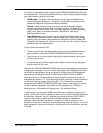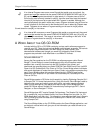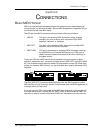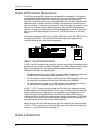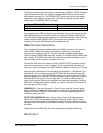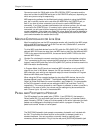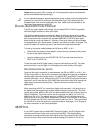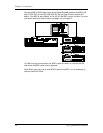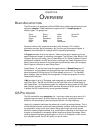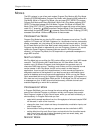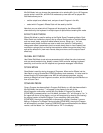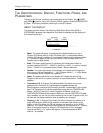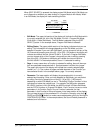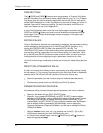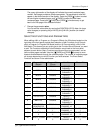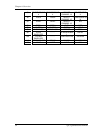
Overview: Chapter 4
CHAPTER 4
OVERVIEW
BASIC ARCHITECTURE
The QS contains 16 megabytes of Sound ROM which provide digitized acoustic and
electronic samples. These samples are organized into 17 sample groups of
different types. The groups are:
Piano String Noise Sound FX
Chromatic Brass Voice Rhythm
Organ Woodwind Ethnic
Guitar Synth Drums
Bass Wave Percussion
Several functions (filter, amplitude envelope, pitch envelope, LFO, multiple
modulation sources, signal processors, etc.) can be used to process a sample. A
Sound is the combination of a sample with its associated processing.
A Program consists of up to four sounds. These sounds can be layered, split over
specific keyboard ranges, or selectively overlapped. The QS has a User Bank of 128
Programs that you can modify, plus 4 Preset Banks of 512 Preset Programs that are
permanently installed in the QS at the factory (although the Preset Programs can be
edited, they must be stored into the User bank to permanently retain your changes).
Each Program is linked to its own Effects Patch.
Preset Banks 1-3 and the User bank are organized into 13 Sound Groups of 10
Sounds each, and are spread out among the top-right row of buttons on the front
panel (programs 00-09 are pianos, 50-59 are basses, and so on). The GenMIDI
bank, however, does not follow this arrangement; it follows the program list of the
General MIDI standard.
A Mix consists of up to 16 Programs, each assigned to a specific MIDI channel and
one Effect Patch. The QS has 100 Mixes in the User Bank, plus 4 Preset Banks of
400 Preset Mixes. This is extremely useful for multitimbral setups where the QS plays
back different sounds on different MIDI channels. Because of its 64 voices and built-
in effects, the QS is often the only sound generator needed.
QS POLYPHONY
The QS provides 64-voice polyphony (i.e., how many notes can play at once). If a
program uses one sound, up to 64 notes can play at once. Layering two sounds
allows for 32-note polyphony and layering four sounds, 16-note polyphony.
Layering is a powerful technique that allows you to build up complex timbres. This is
crucial because acoustic instruments have extremely complex, evolving sounds and
by comparison, many synths sound static. Being able to layer up to four sounds
allows for creating large ensembles (e.g., brass section consisting of alto & tenor sax,
trumpet, and trombone) or extremely realistic versions of single instruments. When
creating layered Programs, keep polyphony in mind. If all Programs in a Mix use all
four available sounds, the QS will quickly run out of voices.
QS7/QS8 Reference Manual 27



